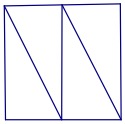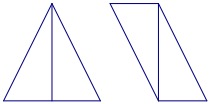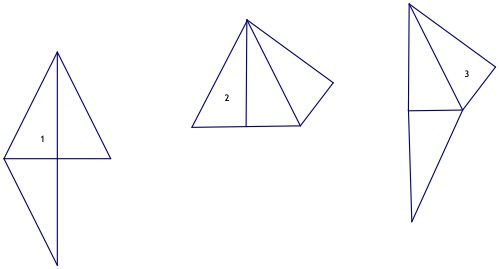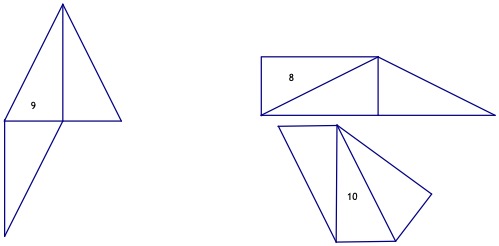Irregular Polygons
|
In this class project, students will need many colored, rather small squares of paper. The squares should be the same color on both sides. You may for example use a “note cube” which contains 550 3 ½ inch by 3 ½ inch squares in eleven bright colors. A large sheet of packing paper taped on a wall may serve as a poster on which students tape their polygons. 
THE PROJECT Students cut their squares into four right triangles as shown in the figure above. If they use 3 ½ inch square paper, the legs will have lengths 1 ¾ and 3 ½ inches. There are 3 tasks below. Make as many different polygons as you can by joining two (task 1), three (task 2), or four (task 3) triangles (of the same color). Tape your figure together with scotch tape, and glue or tape it to the poster. Be sure to check that a polygon of the same shape and size is not already on the poster! GROUND RULES The triangles are joined by edges. The edges have to match exactly. One short leg of a triangle may be joined only with a short leg of another triangle. But you may turn triangles on the other side. Here are two polygons, each made from two triangles: 
Two polygons, a triangle and a parallelogram, each made from two triangles REMARKS How much geometric terminology is introduced is not very important, but the concepts of polygon and congruence are important.
TASK 1 How many can you make from two triangles? The rule is that two triangles only fit together if one side of one exactly fits one side of the other. TASK 2 How many can you make from three triangles? TASK 3 How many can you make with four triangles? Lesson Index |



